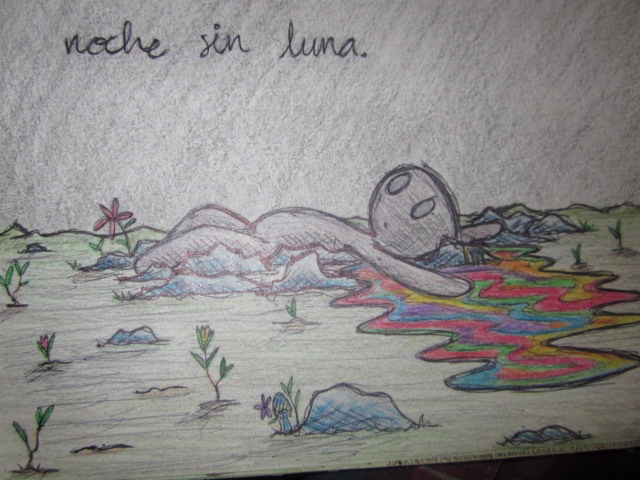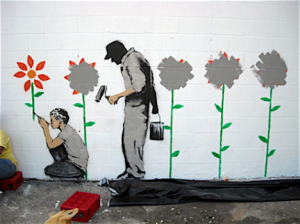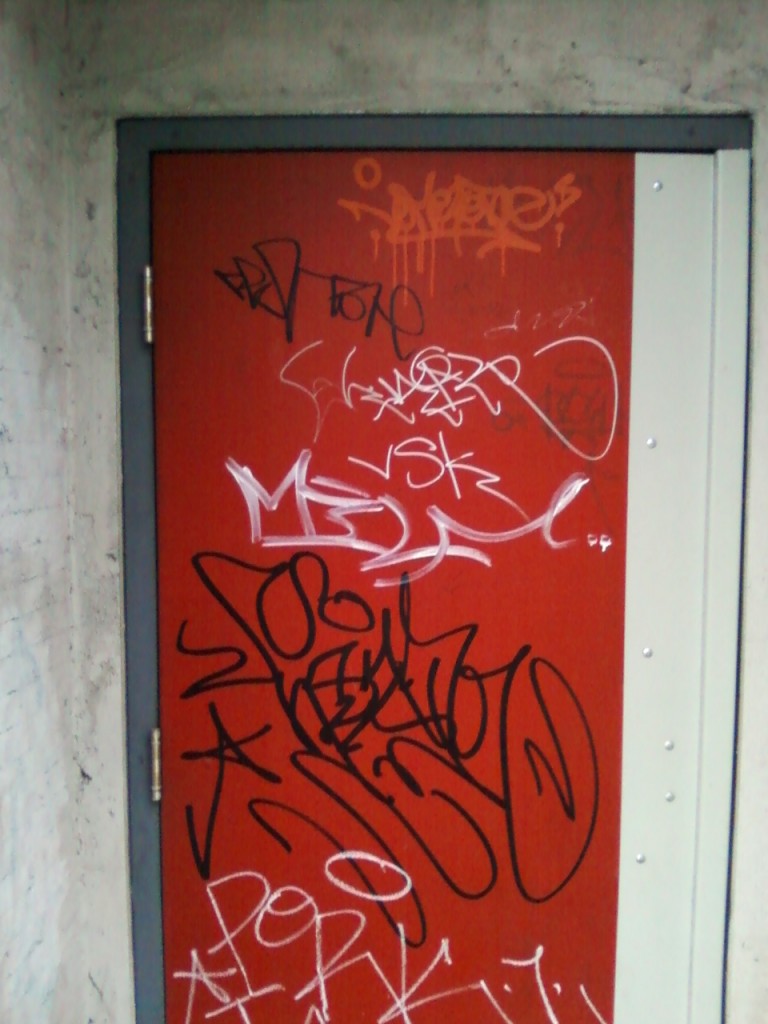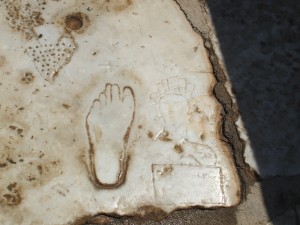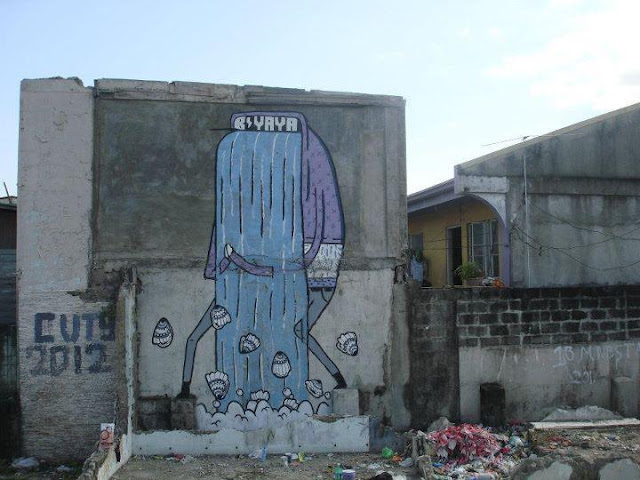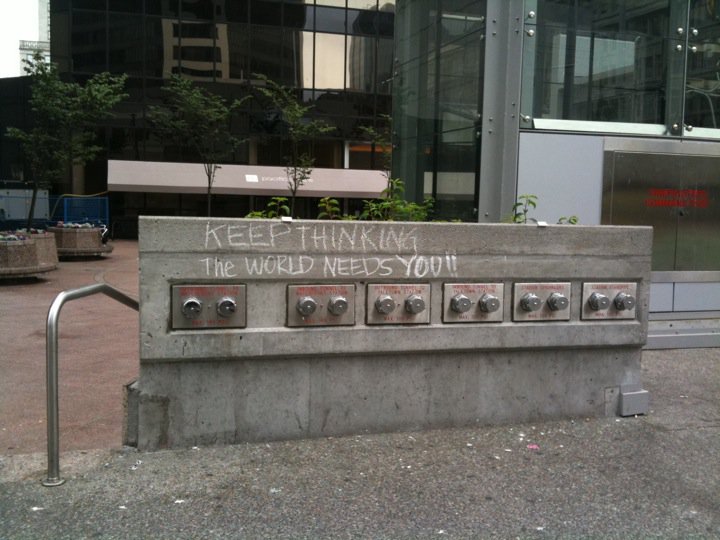This past summer I traveled to Ecuador and the eldest son of my host family, Juan Pablo, was quite the artist. Although he was studying to be a doctor, his passion was visual arts and he showed me pages and pages of his artwork. (above: the first represents his father saying no to “a world of possibilities” 🙂 , and the second is entitled Noche sin Luna or Night without Moon.) Upon seeing Noche sin Luna I told him that his art held a powerful message. In response, he drove me to an ally way just outside the city of Quito that was covered in graffiti.
He believed that something created and displayed in the sanctuary of his bedroom (no matter how beautiful or thought provoking) could never be as powerful as something displayed where it isn’t supposed to be (2008:39).The case of an octopus image (seen below) was particularly interesting. At one time, officials were sent regularly to this ally to erase this piece, only to find it repainted immediately afterwards. Eventually the ‘cleaners’ stopped coming and the artwork has since remained untouched. Every time the image was repainted it became more powerful and once it was finally left intact it represented a victory achieved not by status but by determination. When written on a bedroom wall, Noche sin Luna and whatever meaning it may hold is tamed. However, if Noche sin Luna is written somewhere illegally, then the medium has changed the message (2011:86). The meaning, in a way, is magnified and the piece now carries a message of resistance and defiance, whether the artist means it to or not.
Dickinson, Maggie
2008 The Making of Space, Race, and Place: New York City’s War on Graffiti, 1970 — the Present. Critique of Anthropology 28(1):39.2011
Gastman, Roger
2011 In other words: Graffiti edition. Foreign policy. 189: 86


